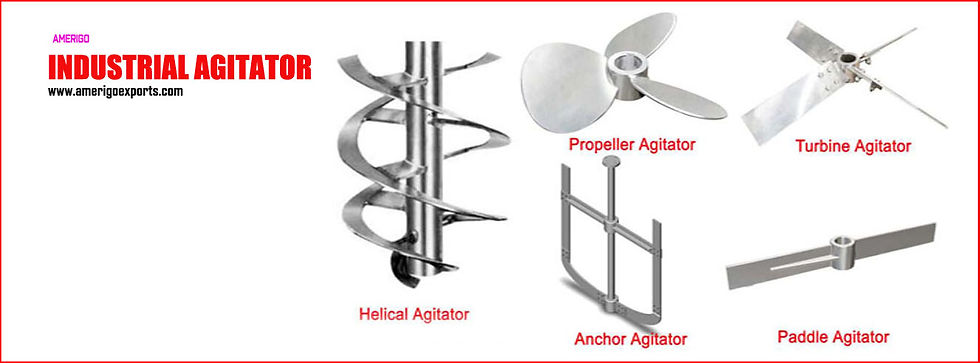Understanding Self-Priming Centrifugal Pumps: Features, Benefits & Applications
- Amerigo Exports
- Jun 18
- 2 min read
In fluid handling systems, self-priming centrifugal pumps play a crucial role where efficient and reliable liquid transfer is essential. Designed to overcome the challenges of conventional pumps, these pumps simplify operations, especially in applications where suction lift is required.
What is a Self-Priming Centrifugal Pump?
A self-priming centrifugal pump is a type of pump engineered to clear air from its system and create a vacuum to draw fluid into the pump casing without the need for manual priming. It combines the efficiency of a centrifugal pump with the added advantage of automatic priming.
How Does It Work?
Self-priming pumps retain a certain amount of liquid inside the pump casing even after the pump stops. When restarted, this retained liquid mixes with the incoming air, creating a vacuum that draws liquid into the pump from the suction line. Once the air is evacuated, the pump begins to operate like a standard centrifugal pump.
Key Features
Automatic priming without external vacuum devices
Quick suction lift capabilities
Compact and rugged construction
Available in different materials: cast iron, stainless steel, bronze, etc.
Back-pull-out design for easy maintenance
Advantages of Self-Priming Centrifugal Pumps
Time-Saving: Eliminates the need for manual priming before operation.
Cost-Efficient: Reduces system complexity and the need for additional priming systems.
Easy Maintenance: Designed for easy inspection and maintenance.
Versatile Installation: Can be installed above the fluid level, offering greater flexibility.
Handles Air-Liquid Mixtures: Ideal for intermittent flow and air-entrained liquids.
Common Applications
Self-priming centrifugal pumps are widely used across industries due to their reliability and efficiency in handling various fluids:
Water supply and dewatering systems
Chemical processing
Food and beverage industry
Effluent and sewage treatment
Irrigation and agriculture
Marine and shipyard operations
Selecting the Right Pump
When choosing a self-priming centrifugal pump, consider:
Fluid properties (viscosity, corrosiveness, abrasiveness)
Required flow rate and head
Suction lift height
Material compatibility
Pump size and footprint
Conclusion
A self-priming centrifugal pump is an ideal choice for operations requiring easy startup, reliable suction, and low maintenance. Its unique design allows it to handle challenging pumping conditions while maintaining high efficiency. Whether you're looking to streamline your industrial process or manage water systems more effectively, self-priming pumps offer a smart and practical solution.
For more details, visit us at https://www.amerigoexports.com/self-priming-centrifugal-pump.html





Comments